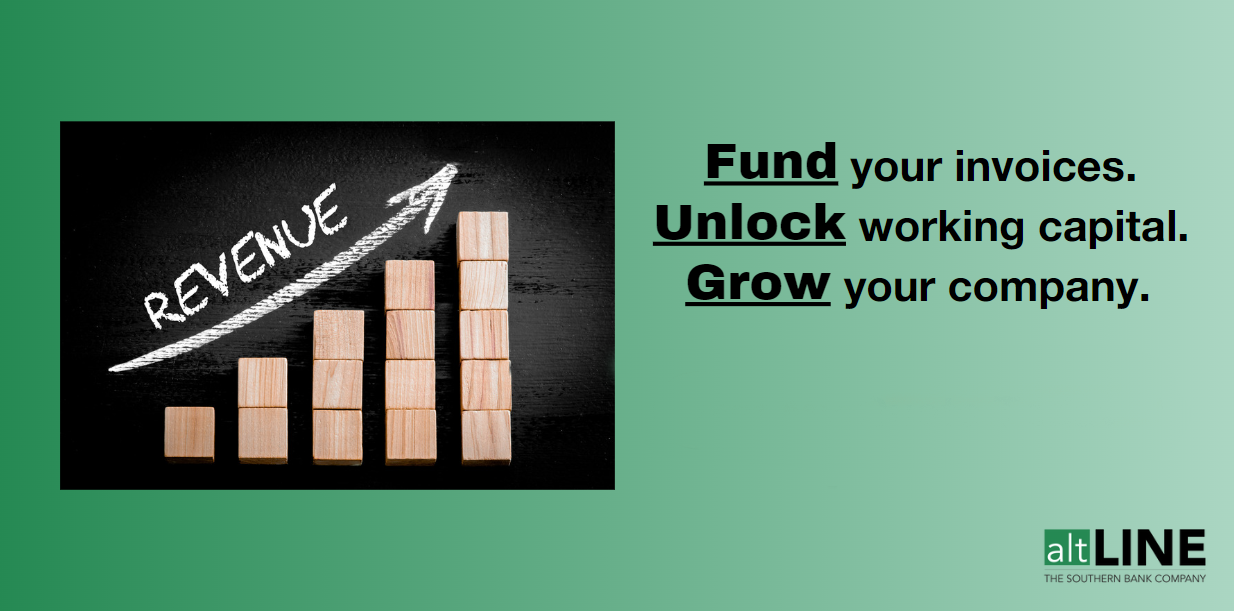How to Improve Cash Flow
Last Updated May 14, 2024
As a business owner, cash flow problems can be stressful. Paying rent, making payroll, and paying off debts all become even more taxing when your cash inflow is not as much as your expenses.
To help you improve your cash flow and worry less over your payables, we have put together this list of some of the best tactics to increase your access to cash. Read on to see our top tips.
What Is Cash Flow?
As a reminder, your business’s cash flow is simply the money (cash and cash equivalents) moving out vs. money moving in. When more money is coming in, that means you have positive cash flow. When more money is moving out, that signals negative cash flow. As you might expect, businesses should aim for positive cash flow.
How to Keep Track of Cash Flow
The standard method for tracking cash flow is by creating a cash flow statement. One of the three essential financial documents, a cash flow statement allows you to lay out all cash inflows and outflows in one place. You can then get a sense for how well you’re managing liquidity at any given time.
How to Identify Changes in Cash Flow
To determine changes in cash flow you should make a habit of creating a cash flow statement every period. You can then analyze your cash flow statements side-by-side to identify the factors that caused such changes.
Most business owners should be doing this quarterly. However, owners of new businesses might want to make a monthly cash flow statement to be increasingly up to speed, since finances can be tight in the earliest stages.
If you find that your cash flow is increasingly negative over multiple periods in a row, you should take immediate action by working to improve your cash flow.
How to Improve Cash Flow
Thankfully, there are numerous tried-and-true methods to improving cash flow. From getting creative with your payment terms to looking into alternative financing, rest assured there’s likely a solution to any obstacle you might be facing.
With that being said, below are 10 ways you can increase cash flow to ensure your business is headed in the right direction.
Offer Early Payment Discounts
Early payment discounts, also known as quick pay discounts, are a great way to incentivize your customers to pay their invoices before they are due. Typical early payment discounts fall around 1-2% per invoice, which may not seem like much but can have a big impact for customers with large invoices due.
Quick pay discounts are a win/win for you and your customers: you receive cash sooner, and they receive a discount on the product or service they received. To get an idea of some common early payment terms, see the chart below:
| Early Payment Discount Terms | What Do the Terms Mean? |
|---|---|
| 2/10 net 30 | Customer receives a 2% discount if the invoice is paid within 10 days; if paid after the discount timeframe, the full amount is due within 30 days. |
| 2/15 net 30 | Customer receives a 2% discount if the invoice is paid within 15 days; if paid after the discount timeframe, the full amount is due within 30 days. |
| 2/10 net 60 | Customer receives a 2% discount if the invoice is paid within 10 days; if paid after the discount timeframe, the full amount is due within 60 days. |
| 2/15 net 60 | Customer receives a 2% discount if the invoice is paid within 15 days; if paid after the discount timeframe, the full amount is due within 60 days. |
Keep in mind that early pay discounts do not guarantee that you will receive payment sooner as some companies value having cash on hand more than receiving a discount.
Send Invoices Quickly
While you cannot control how quickly customers pay their invoices, you can control how quickly you send invoices to them. The countdown to the due date does not start until your customer receives the invoice, meaning the quicker you send the invoice out, the sooner you get paid.
To speed up your invoicing process, consider using templates and sending invoices electronically. Be sure not to put off invoicing though, as this just delays your payment, which can result in negative cash flow.
Charge a Late Payment Fee
If you are concerned about customers making late payments, charging a late payment fee can encourage them to pay on time. Late fees are typically charged in the form of interest, and each state has different laws about how much interest you can charge. Under law, you cannot charge late payment fees as an additional revenue stream or to punish customers. Instead, they should be used to make up for the costs incurred as a result of the late payment. Be sure to research your state’s laws surrounding late payment fees before including them.
Additionally, make sure you are upfront with your customers about your late payment fees. You do not want to surprise customers with these fees, which could result in losing their business. Be sure to charge a reasonable amount, and sometimes you may even decide not to enforce the late payment policy if your customer is going through a difficult time. At the end of the day, be sure to be fair in what you charge and how you enforce these fees.
Reduce Inventory
A common culprit behind tying up working capital is inventory. While it is important to have inventory on hand to fulfill orders in a timely manner, having more inventory than necessary can slow your cash inflow.
To avoid tying up your cash in inventory, be sure to review your sales for seasonal patterns to better inform your inventory purchasing. Additionally, if you find that some items are not selling, it may be best to liquidate some of this inventory to free up cash. You can even sell these less popular items at a discount to entice customers to purchase them, which will increase your cash flow as you convert working capital to cash.
Choose to Lease Instead of Buy
It may seem counterintuitive to lease instead purchase capital-intensive items, such as equipment, as leasing often results in paying more in the long run. However, for a business that is just getting started, leasing allows you to pay smaller amounts over a longer period of time, rather than making a large one-time payment. By spreading out these costs, you free up cash to be used for more pressing matters, such as payroll and other operating expenses.
An example might be a new owner-operator leasing a truck instead of buying a truck. The average cost for a semi-truck is around $155,000-$200,000. How many brand-new business owners have that kind of money just laying around? Alternatively, leasing a commercial truck costs between $1,600-$2,500 per month—a much less intimidating price.
See below for more benefits of leasing instead of buying:
- You have lower up front costs
- Lease payments usually come with a tax write off
- Lease contracts frequently cover maintenance
- You can more easily upgrade equipment (and avoid owning obsolete equipment)
Pay Slowly
You do not have to make payments as soon as you receive an invoice. Instead, review your invoices and take note of the payment terms to see how long you have to pay. Waiting until just before the deadline, rather than paying immediately, is a great way to keep cash on hand to pay your most urgent expenses.
Additionally, consider when your business most needs cash and try to plan your invoice payments accordingly. For example, if October is a slow month and you have an invoice due on November 5th, you may want to wait until the deadline to pay your invoice as cash flow may be slower leading up to the due date.
Negotiate Better Payment Terms
If you are paying your invoices slowly but you still feel tight on cash, you can try to negotiate better payment terms with your suppliers and vendors. For example, you can see if your vendors are willing to change their payment terms from net 30 to net 60, which would give you an additional 30 days to make your payments. Similarly, you can try to negotiate early payment discounts if it would be more beneficial to save money than to wait to pay.
Whether you want to extend your payment terms or try to get a discount, it is a good idea to always build positive relationships with your vendors and suppliers. The better your relationship, the more likely they are to work with your payment needs.
Offer Electronic Payment Options
Offering electronic payment options, such as debit/credit card payments and ACH bank transfers, can reduce the time it takes to collect invoice payments. Because electronic payments are easier (and quicker) than sending payments by mail, customers are more likely to pay early. Additionally, if you use an e-invoicing software, you can automate the invoicing process from invoice creation to collection, giving you time to focus on other priorities and making it easier for customers to pay electronically.
Increase Your Prices
Increasing your prices can be a long-term cash flow solution. While it can be daunting to charge customers more, sometimes it is necessary to improve cash flow and profit. By increasing your prices, you will bring in more cash for every purchase, but it is important to consider a few factors when exploring upping your prices:
- How much are your competitors charging?
- Does your current revenue adequately cover the costs of production/services provided?
- Will your sales drop significantly by increasing your prices?
- How much should prices increase?
- How do you communicate price increases to customers?
While there are a lot of considerations that go into changing your pricing, it can still be an effective solution to increase cash flow. Just make sure you come up with a clear plan prior to rolling out these changes.
Factor Your Invoices
Invoice factoring is an effective way to quickly receive cash without giving up equity or taking out a loan. Factoring is a type of alternative lending in which you sell your outstanding invoices to a third party (known as the “factor”) in exchange for a cash advance.
Once you’re approved by the factor, it typically takes between 24 and 48 hours to receive your cash advance (which can be up to 90% of the face value of the invoice that you sold). Once your customer pays the invoice, the rest of the invoice value will be given to you minus the factoring fees, which are typically between 1% and 3% of the face value of the invoice.
Because you can receive your cash advance very quickly compared to other forms of financing, invoice factoring is an excellent way to increase cash flow in a matter of days, not weeks.
Prevent Unexpected Cash Flow Problems by Forecasting Cash Flow
The most successful business owners are proactive, not reactive. To prevent yourself from needing to figure out how to increase cash flow in the future, you should build a cash flow forecast each period.
Cash flow forecasting is essentially predicting what your cash flow will look like in a given period based on factors such as market trends, economic trends, projected sales, and potential future purchases, projects, or investments. A cash flow model can then be created to get insights into whether or not you can afford a future expense such as a one-time purchase, new project, or other investment.
For instance, say you run a staffing company and you’re considering purchasing new expensive software, but you’re unsure whether or not your business can remain financially afloat in the short-term if you move forward with the purchase. To solve this dilemma, you can build a cash flow model. This model will determine what your future cash flow would look like in two scenarios: where you do purchase the software and where you don’t purchase the software.
Cash flow modeling is relatively simple, just follow these steps:
- Determine the period (length of time) for which you’re projecting.
- Note your projected sales income for that period.
- Identify and add all projected cash and cash equivalent inflows (non-sales income).
- Identify and add all projected cash and cash equivalent outflows.
- Compare incomings vs. outgoings to forecast future cash flow.
- Add the projected cost of the expense (purchase, project, investment, etc.) to your projected future cash flow.
The resulting figure would be your projected cash flow in the scenario you went ahead with the expense.
If you feel the cash flow figure is healthy (perhaps that means positive cash flow), that signals you can feel comfortable moving forward with the project. If negative cash flow is the outcome, you might want to reconsider. Or alternatively, at least have a plan in place to finance your business so you can afford the project.
In-Summary: How to Improve Your Cash Flow
You should explore multiple avenues to improve cash flow. If you’re having trouble identifying which is the optimal solution, consider utilizing your network to understand what worked and what didn’t for others within your industry. Eventually, you’ll find methods that work best for your business.
Regardless, keep in mind that if you’re in a position of negative cash flow, you’re not alone. The majority of startups and small businesses struggle to maintain a consistently healthy cash flow. You might be required to make an expensive purchase or investment that your business cannot do without that in turn hinders your cash flow. That’s OK! The key is keeping a balance, regularly monitoring your inflows vs. outflows, and doing what you can to prevent long-term negative cash flow. Sustained periods of cash flow problems are what gets business owners in trouble, not brief periods.
How to Improve Your Cash Flow FAQs
Below are some of the most commonly asked questions about improving your cash flow.
How can you improve cash flow from operating activities?
A few simple ways to improve cash flow from operating activities include offering early payment discounts, sending invoices quicker, offering multiple options for customer payment (including one-click payment), and increasing your prices.
Is negative cash flow bad?
Negative cash flow isn’t a good thing, but it’s important to know that most business owners will experience negative cash flow at some point. Brief periods of negative cash flow are common, especially for new businesses after making expensive purchases. The key is to quickly identify when your cash flow needs to be improved before you find your business in a sustained period of negative cash flow, which could lead to a deep financial hole that you can’t escape.
How can you improve cash flow management?
Cash flow management can be improved by keeping track of your cash flow by regularly creating cash flow statements, identifying the causes behind cash flow changes, and implementing strategies to increase cash flow.
Angela is the Director of Online Marketing at altLINE where she manages content production, marketing and sales operations, and digital PR. Angela joined altLINE in 2022 after several years of working in digital marketing across various industries including financial services and B2B. Angela loves creating content that helps readers better understand their financing options and helps them make informed decisions about factoring. Her work has been featured in publications like Search Engine Journal and Moz.




